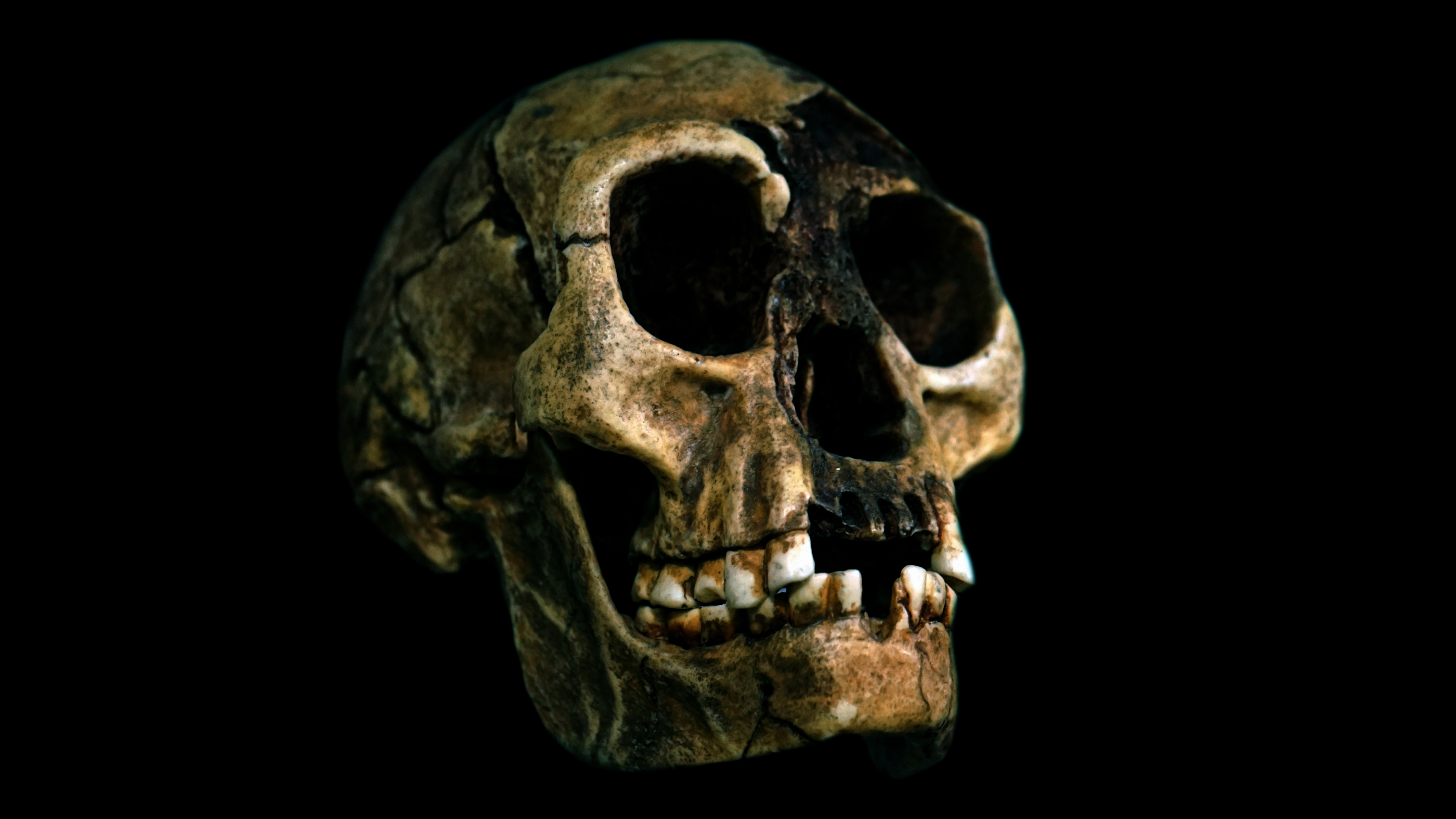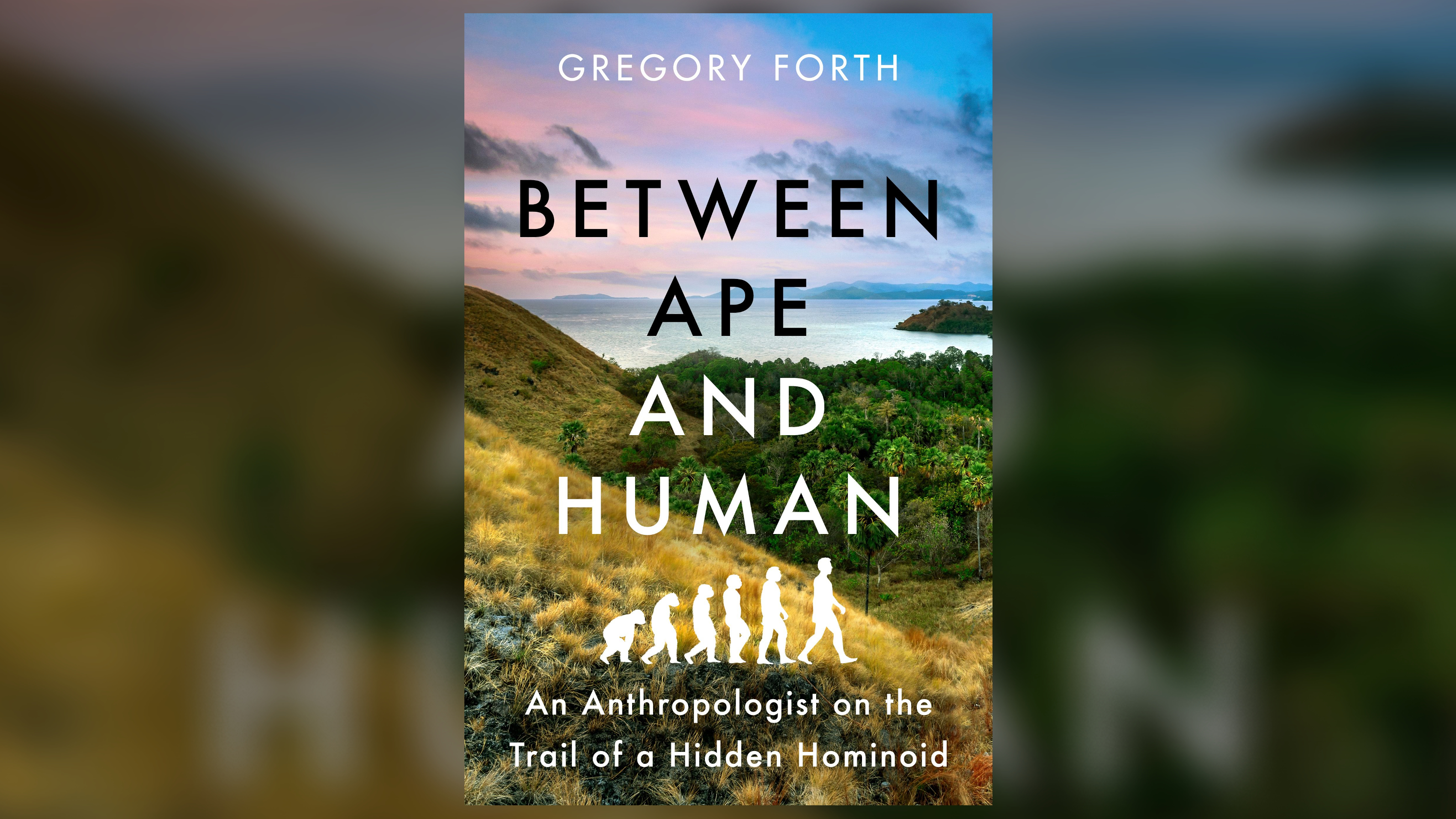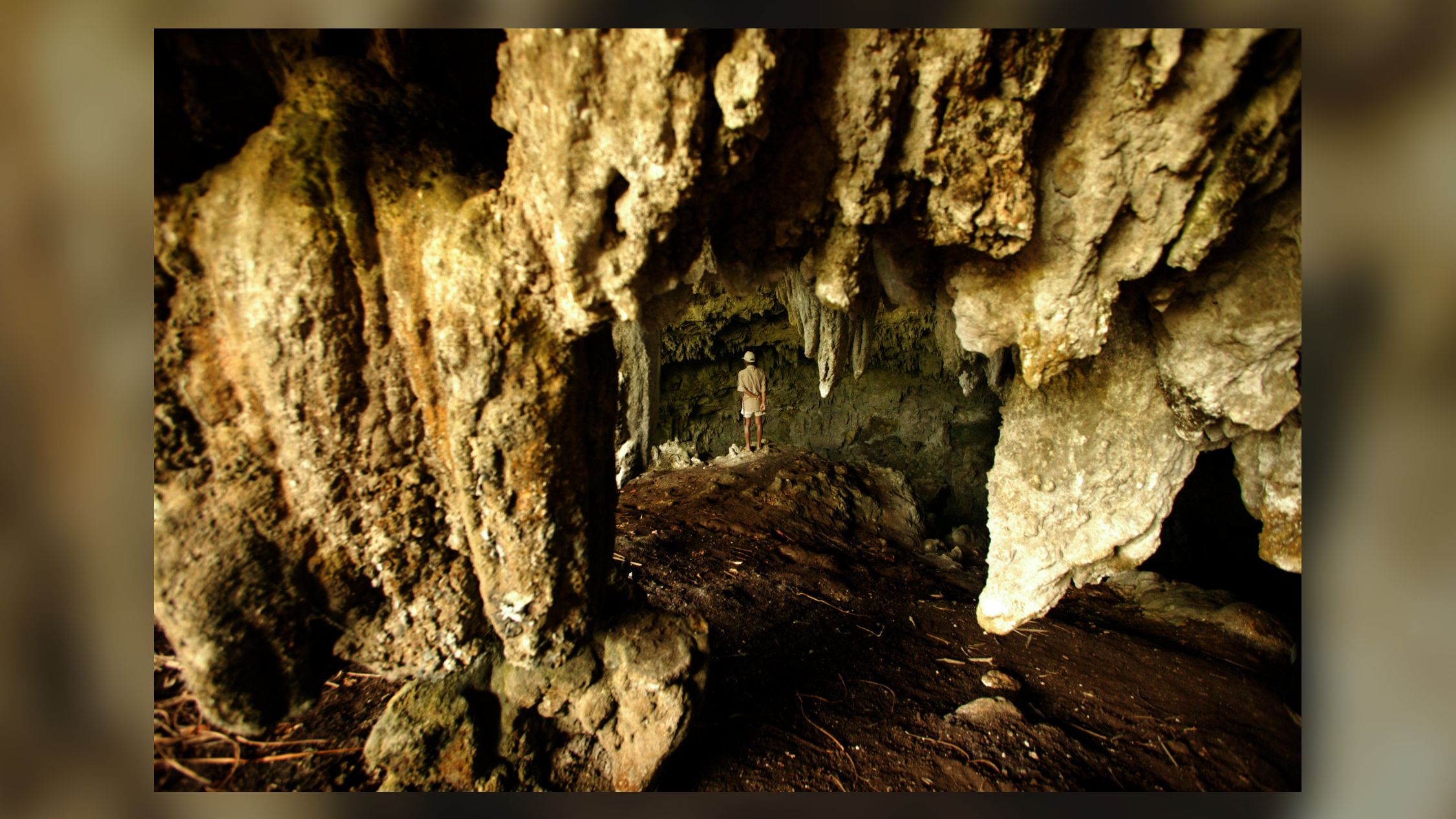Human 'hobbit' ancestor may be hiding in Indonesia, new controversial book claims
But experts on the "Hobbit," Homo floresiensis, doubt it.

Between about 700,000 years ago and 60,000 years ago, a diminutive early human walked the island of Flores, in what is now Indonesia. Homo floresiensis, nicknamed the "hobbit" because it stood only about 3 feet, 6 inches (106 centimeters) tall, was a small-brained, large-footed toolmaker, and no one knows where it evolved from.
Now, one anthropologist is arguing that no one really knows that H. floresiensis went extinct — and that it may survive into the modern day. In a new book, Gregory Forth, an anthropologist retired from the University of Alberta, argues that reports of an "ape-man" on Flores could be sightings of the ancient human ancestor, still kicking today.
"We simply don't know when this species became extinct or indeed dare I say — I did dare say — we don't even know if it is extinct," Forth told Live Science. "So there is some possibility that it is still alive."
Needless to say, this is a dramatic claim, and experts who study H. floresiensis are skeptical.
"Flores is an island that has about the same area of Connecticut and has two million people living on it today," said John Hawks, a paleoanthropologist at the University of Wisconsin, Madison. The population is spread out across the island, he added.
Related: Top 10 things that make humans special
"Realistically, the idea that there's a large primate that is unobserved on this island and surviving in a population that can sustain itself is pretty close to zero," Hawks told Live Science.
Get the world’s most fascinating discoveries delivered straight to your inbox.
A long-lost relative
Forth sees it differently. He has been doing anthropological fieldwork on the island since 1984, and since that time has heard local stories of small, hairy, humanoid creatures living in the forest. He wrote about these tales in his research until 2003, when H. floresiensis was discovered. It was then, he told Live Science, that he made the connection.
"I heard about these similarly small humanlike creatures in a region called Lio, which were said to still be alive, and people were giving accounts of what they looked like," Forth said. In one excerpt from his new book, "Between Ape and Human: An Anthropologist on the Trail of a Hidden Hominoid," (Pegasus Books, 2022), Forth describes an interview with a man who says he disposed of the corpse of a creature that could not have been a monkey but that was also not human, with straight light-colored hair on its body, a well-formed nose, and a stub of a tail. Over the years, Forth collected 30 eyewitness accounts of similar creatures that, he said, match the description of H. floresiensis.
Of course, there are many eyewitness accounts of cryptic creatures around the world, such as Sasquatch in the Pacific Northwest and British Columbia, said Mark Collard, an evolutionary anthropologist based at Simon Fraser University in Canada. Humans are adept at telling and believing stories, Collard told Live Science, and those stories can easily become central to people's beliefs.
The tales of these "ape-men" on Flores are different from those of Bigfoot in the Pacific Northwest, Forth argued, because there have never been non-human apes in North America. But in Flores, he said, H. floresiensis indubitably did exist.
But how long did they exist? H. floresiensis bones were first found in Liang Bua cave on Flores in 2003. The youngest evidence of the hobbits using the cave dates back to 50,000 years ago, said Elizabeth Veatch, a zooarchaeologist at the Smithsonian National Museum of Natural History who studies the species. Modern humans don't appear on Flores until 47,000 years ago, Veatch told Live Science, and there is no evidence that the two species overlapped at Liang Bua cave. In fact, H. floresiensis wasn't using the site much after 60,000 years ago, she said.
"Based on faunal evidence, there was likely an environmental change that occurred around 60,000 years ago that altered the landscape around Liang Bua which caused Homo floresiensis to migrate elsewhere on the island to forage in more suitable habitats," Veatch said.

In 2014, archaeologists discovered another site on Flores, Mata Menge, with a fossil mandible and teeth from a hominin dating back to about 700,000 years ago. These bones are thought to be from a far older population of H. floresiensis. Stone tools were also found at the site.
These findings suggest that H. floresiensis had a long history on Flores (the species has not been found on any other island). But anthropologists and archaeologists have seen no indication that the hobbit lived alongside modern humans.
It is possible that they did, for a time, Thompson said. And if so, perhaps the stories in the Lio region of Flores are a very deep cultural memory. In Australia, Indigenous people have stories that clearly correspond to real events that occurred thousands of years prior, including a dramatic meteor strike. Something similar might be happening on Flores, Thompson said.
"What we might have is a situation where [H. floresiensis] potentially persisted in mythology for a really long time," she told Live Science.
But Thompson, too, was skeptical that a 3-foot-tall primate could go largely undetected on Flores until the modern day.
"We do turn up species that we think are extinct in science, it happens," she said, "But it's small things. It's not something that would be so noticeable."
Collard agreed. "I just think we have to be very cautious with oral history," he said. "I think it has value, but it has to be approached skeptically."
Mysterious ancestor
That's not to say that H. floresiensis isn't mysterious. The two sites containing bones and tools from the primate date hundreds of thousands of years apart from each other, leaving a huge gap in history. Researchers do know that hobbit used cobbles to make sharp stone flakes, knifelike tools that could have been used to cut plants or meat or carve other tools out of wood, Hawks said. It's unknown whether H. floresiensis used fire or hunted large prey.
Perhaps the biggest question about H. floresiensis is where the species came from. Anatomically, the "hobbit" has teeth that look much like those of other Homo species such as Homo erectus and Homo sapiens. H. floresiensis' presence in Indonesia some 700,000 to 800,000 years ago predates H. sapiens' arrival by a huge margin.
H. erectus, though, left Africa 1.8 million years ago, and popped up on what is today the island of Java before H. floresiensis in the fossil record. This raises the possibility that the hobbit descended from H. erectus and perhaps that it evolved a small body size as a result of island living, a phenomenon called island dwarfism.
But there are problems with that hypothesis. For one, Thompson told Live Science, H. erectus survived on other islands in Southeast Asia at its usual size until about 115,000 years ago, and it would be odd for island dwarfism to occur only on Flores and nowhere else over hundreds of thousands of years. And H. floresiensis has many anatomical features, such as its shoulders and wrists, that look less like its Homo cousins and more like earlier human ancestors such as Australopithecus.

"The anatomy doesn't make it clear," Hawks said.
The anatomical evidence suggests that H. floresiensis could have been the descendent of a human ancestor that left Africa before H. erectus, Collard said. If so, scientists haven't yet found archaeological evidence for who that ancestor might have been or when they left.
Whatever the story of the journey, it must have been incredible. Tiny H. floresiensis or its ancestors somehow made it across continents and rough open water to land on the island of Flores. (There was always open water there, Collard said, even as sea levels rose and fell over hundreds of thousands of years.) Evidence of other early hominins, such as the Philippines' Homo luzonensis, discovered in 2019 on the island of Luzon, suggests that human ancestors were doing far more than anthropologists and archaeologists ever believed possible.
"Was it an accidental rafting situation? Was it a deliberate rafting situation?" Collard said. "It seems unlikely, but were they able to use boats?"
Overlapping populations?
What researchers in human origins are now learning is that the interactions between early populations of Homo species were extraordinarily complex. It's now common knowledge that Homo sapiens and Neanderthals interbred, and that Neanderthal DNA persists in modern humans. Humans in Oceania and East Asia also interbred with another human ancestor, Denisovans, about which little is known. Remarkably, Hawks said, Denisovan genes persist in east Indonesian populations, suggesting that these human relatives were also living on these islands. No fossil record has been found of Denisovans in eastern Indonesia thus far, however.
The oldest cave art on record also comes from Indonesia, in the form of a red pig painted on the island of Sulawesi 45,500 years ago.This art may have been made by Homo sapiens.
There is no evidence that humans and H. floresiensis ever interbred. Scientists haven't found any unknown genes in the modern Indonesian genome that could hail back to the little hominin. The timing of the fossils that have been found suggest that the hobbit could have been living happily on Flores until modern humans showed up and wiped it out, inadvertently or not, Hawks said.
"It's very plausible that modern humans are responsible for its extinction," he said.
Or perhaps there are newer H. floresiensis fossils waiting to be found that will prove that the two Homo species overlapped. The last decade has been a golden age for Indonesian archaeology and international collaborations between local scientists and the rest of the world, Hawks said. It's almost certain that more discoveries are to come.
"The fact that we only have a handful of sites that represent almost a million years of habitation of some of these places tells us that there's a whole lot that we haven't found," Hawks said.
Originally published on Live Science

Stephanie Pappas is a contributing writer for Live Science, covering topics ranging from geoscience to archaeology to the human brain and behavior. She was previously a senior writer for Live Science but is now a freelancer based in Denver, Colorado, and regularly contributes to Scientific American and The Monitor, the monthly magazine of the American Psychological Association. Stephanie received a bachelor's degree in psychology from the University of South Carolina and a graduate certificate in science communication from the University of California, Santa Cruz.


